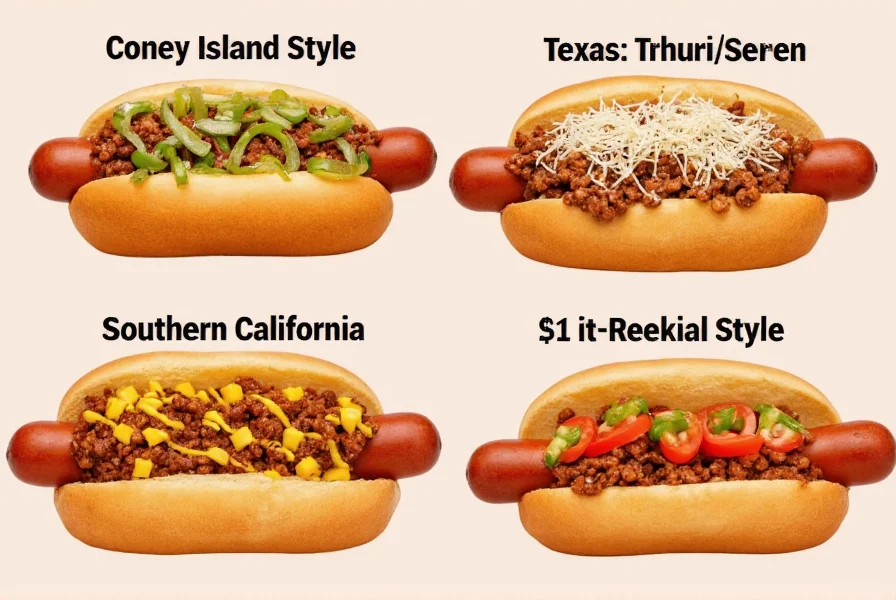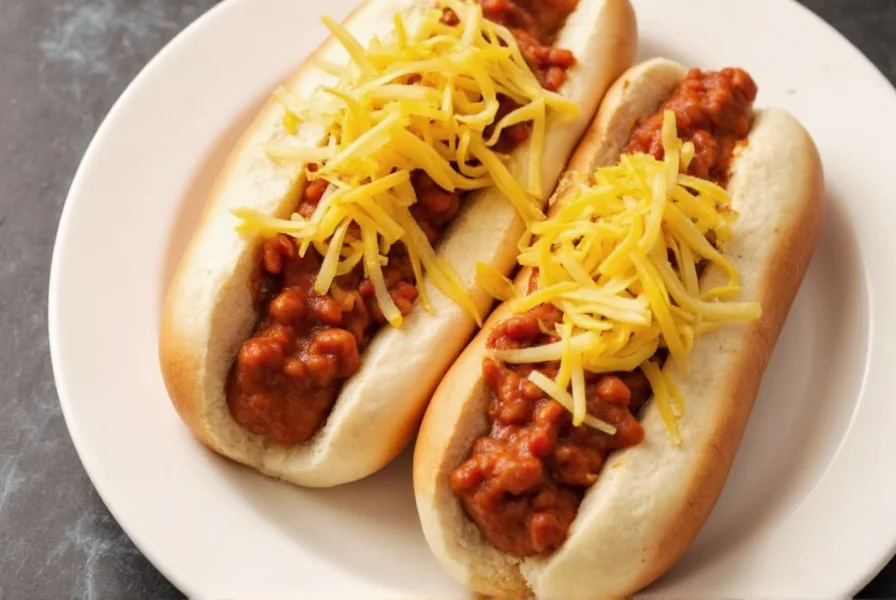Chili dogs represent an American classic that combines the simplicity of hot dogs with the hearty satisfaction of chili. This beloved comfort food has evolved from street vendor staple to backyard barbecue favorite, with regional variations across the United States. Creating perfect chili dogs at home requires understanding the balance between quality ingredients and proper technique—something many commercial versions fail to achieve.
Essential Ingredients for Authentic Chili Dogs
Building exceptional chili dogs begins with selecting quality components. The foundation rests on three critical elements: the hot dogs themselves, the chili topping, and complementary condiments. For the best results, choose all-beef hot dogs with natural casings that provide that signature snap when bitten. Avoid pre-cooked varieties that often contain excessive sodium and preservatives.
| Ingredient | Quantity | Substitution Options |
|---|---|---|
| All-beef hot dogs | 8 links | Chicken or turkey dogs for lighter option |
| Ground beef (80/20) | 1 pound | Ground turkey or plant-based crumbles |
| Yellow onion | 1 large, finely diced | Shallots for milder flavor |
| Chili powder | 2 tablespoons | Chipotle powder for smokiness |
| Tomato sauce | 15 oz can | Crushed tomatoes for texture |
Equipment Checklist
Having the right tools streamlines the chili dog preparation process. You'll need a medium saucepan for the chili, a separate skillet for the hot dogs, and a small pot for steaming buns if desired. A fine mesh strainer proves invaluable for draining excess fat from the cooked ground beef, while a wooden spoon helps prevent scorching during simmering. For authentic stadium-style presentation, consider using a hot dog steamer or warming tray to keep everything at optimal temperature until serving.

Step-by-Step Preparation Guide
Creating perfect chili dogs requires attention to timing and technique. Begin by browning the ground beef in a saucepan over medium heat, breaking it into small pieces as it cooks. Once fully cooked, drain excess fat through a fine mesh strainer—this simple step prevents greasy chili that overwhelms the other flavors. Return the beef to the pan and add the diced onions, cooking until translucent.
Next, incorporate the chili powder, cumin, garlic powder, and salt, stirring constantly for one minute to toast the spices and release their essential oils. Pour in the tomato sauce and beef broth, then reduce heat to low. Simmer uncovered for 20 minutes, stirring occasionally, allowing the chili to thicken and develop complex flavors. During this time, prepare the hot dogs by either grilling, boiling, or pan-frying until heated through and slightly blistered.
Timing Breakdown for Perfect Execution
Mastering the timing ensures all components come together simultaneously. The chili requires 25 minutes total preparation time (5 minutes prep, 20 minutes simmering). Hot dogs need approximately 8-10 minutes depending on cooking method. Buns should be toasted or steamed during the final 3 minutes of chili preparation. This coordinated approach prevents cold components or soggy buns—a common pitfall in amateur chili dog preparation.
Many home cooks make the critical error of adding hot dogs directly to the chili, which causes them to become waterlogged and lose their distinctive texture. Instead, place the cooked hot dog in the bun first, then ladle the warm chili over the top. This technique preserves the hot dog's integrity while allowing the flavors to mingle pleasantly.
Regional Variations Worth Trying
America's diverse culinary landscape has produced several distinctive chili dog styles worth exploring. The Coney Island version features a meatier chili with no beans, topped with diced white onions and yellow mustard. Southern California's version often includes chopped tomatoes and a slightly sweeter chili base. For an authentic Texas-style experience, omit beans entirely and add a touch of coffee to deepen the chili's complexity—a technique that transforms basic ingredients into something extraordinary.

Serving and Storage Recommendations
Serve chili dogs immediately after assembly for optimal texture and temperature. Place them on warmed plates to prevent rapid cooling. For gatherings, keep the chili warm in a slow cooker set to 'keep warm' and cook hot dogs in batches. Leftover chili stores exceptionally well—cool completely, then transfer to airtight containers. Properly stored, it maintains quality for up to four days in the refrigerator or three months in the freezer. Never refreeze previously frozen chili, as this compromises both texture and safety.
Common Mistakes to Avoid
Several pitfalls can undermine your chili dog experience. Using pre-made canned chili often results in overly sweet or artificial-tasting toppings that lack depth. Overcooking the chili causes separation and a grainy texture. Adding cheese directly to the hot chili makes it seize up rather than melt smoothly—always sprinkle cheese on top so it melts gradually from the heat of the chili. Finally, skipping the onion garnish removes a crucial textural and flavor element that balances the richness of the chili.
Frequently Asked Questions
What's the secret to making chili that doesn't taste bland?
The secret lies in properly toasting your spices. Heat chili powder, cumin, and garlic powder in the pan with the cooked beef and onions for one full minute before adding liquids. This process releases essential oils and creates deeper flavor compounds that canned or instant seasonings can't replicate.
Can I make chili dogs ahead of time for a party?
Yes, but with strategic planning. Prepare the chili up to three days in advance and store refrigerated. Keep hot dogs and buns separate until serving. When ready to serve, reheat chili gently, cook hot dogs fresh, and assemble immediately. This approach maintains optimal texture in all components.
Why do restaurant chili dogs taste better than homemade versions?
Professional kitchens typically use a higher ratio of meat to sauce and simmer their chili longer to develop flavor. They also maintain proper temperature control—keeping chili at serving temperature without continued cooking that degrades texture. The bun quality and toasting technique also contribute significantly to the superior experience.
What's the best way to prevent soggy buns with chili dogs?
Toast or lightly steam buns immediately before serving. Place a barrier between the bun and hot dog by spreading a thin layer of mustard or mayonnaise inside the bun first—this creates moisture resistance. Most importantly, assemble just before eating rather than letting them sit with the chili already added.











 浙公网安备
33010002000092号
浙公网安备
33010002000092号 浙B2-20120091-4
浙B2-20120091-4